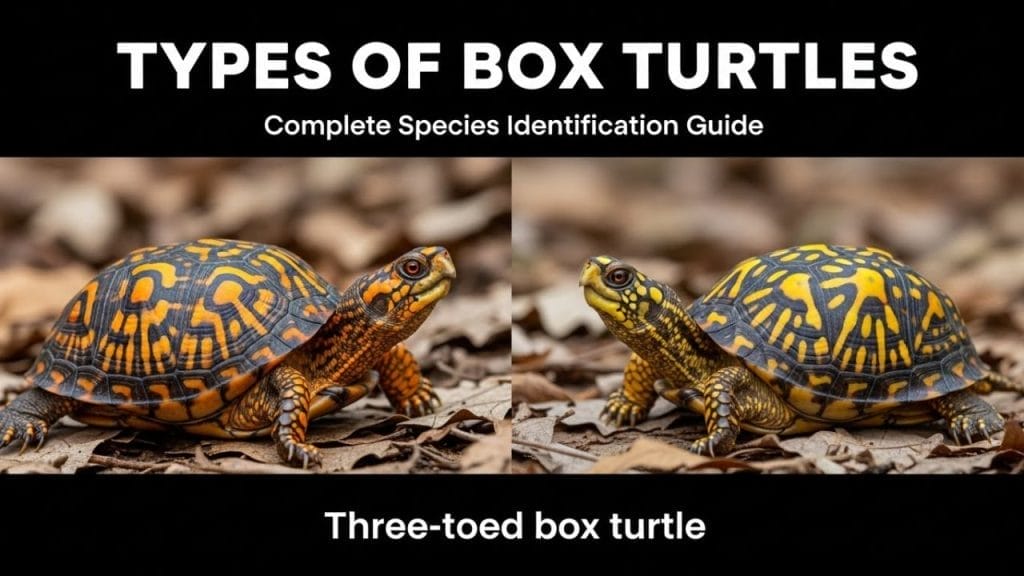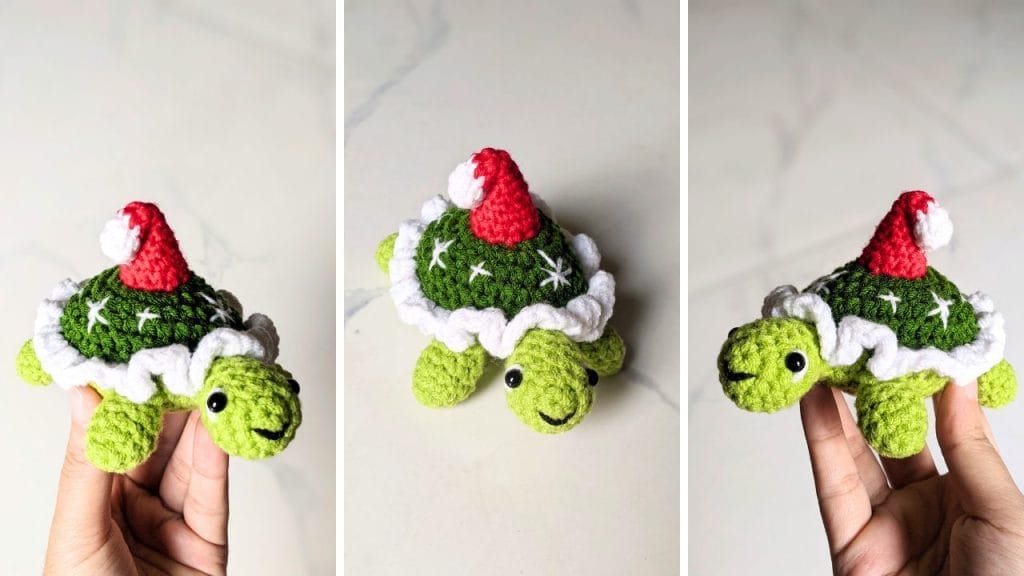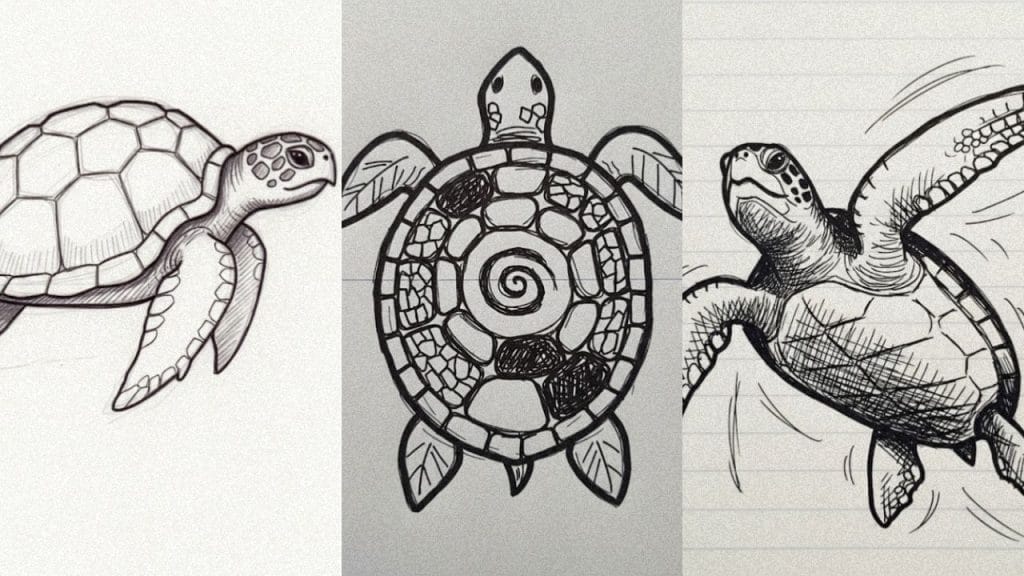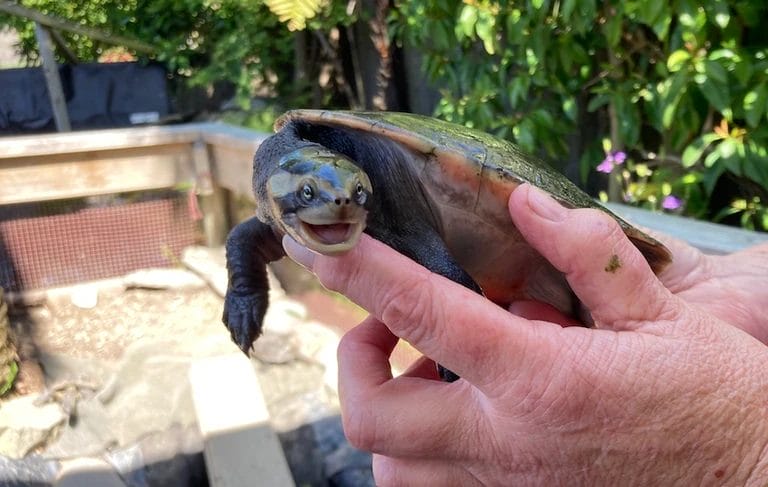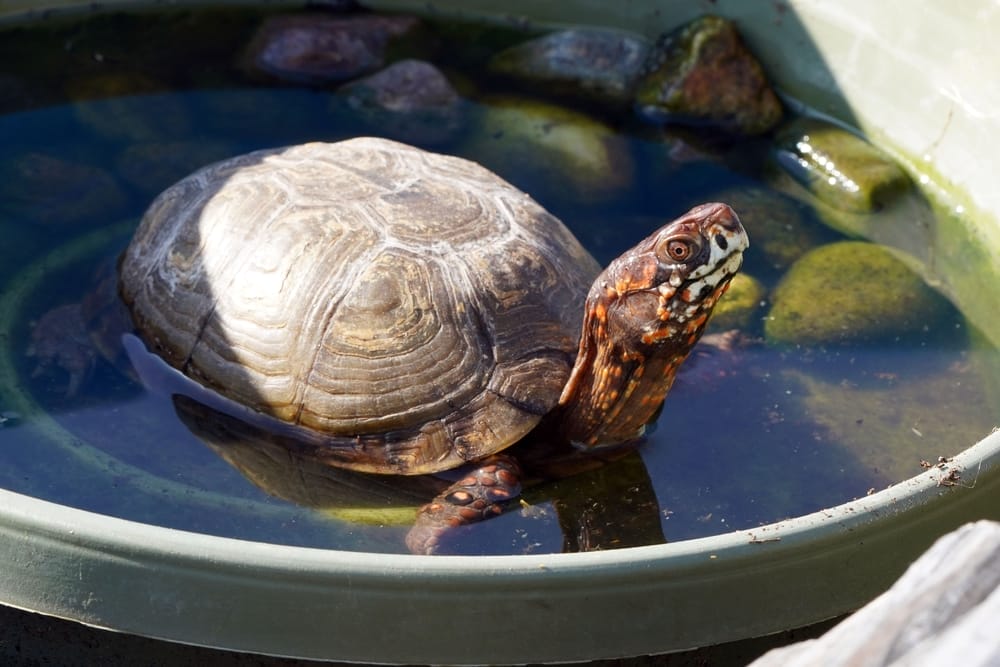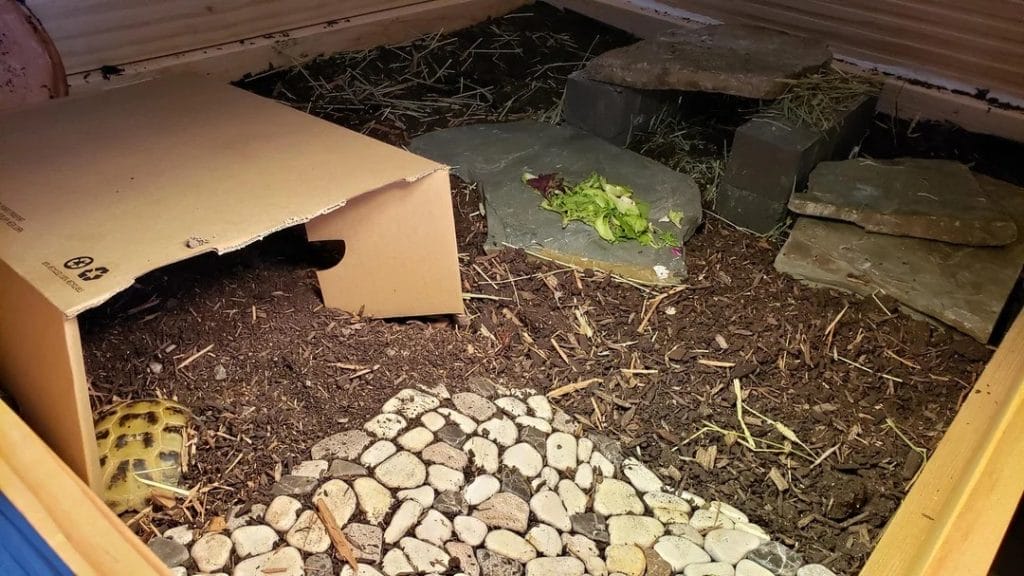Keeping Red-Footed Tortoises Happy and Healthy: Your Go-To Care Guide

This post was created with help from AI tools and carefully reviewed by a human (Muntaseer Rahman). For more on how we use AI on this site, check out our Editorial Policy.
Caring for a red-footed tortoise is more than just providing food and a warm spot to bask—it’s about creating a mini paradise that meets their unique needs.
From choosing the right diet to understanding their quirks, this guide dives into every detail to keep your shelled friend happy, healthy, and thriving.
Let’s get started!
Creating the Perfect Habitat for Your Red-Footed Tortoise
When I first got my Red-Footed Tortoise, setting up the habitat felt overwhelming. Turns out, it’s all about creating a warm, cozy space that mimics their natural environment. Here’s a breakdown of what you need to make your tortoise feel right at home.
Enclosure Setup: Room to Roam!
These little guys may be small, but they need room to explore. Here’s what to know:
- Size Requirements: For adult tortoises, aim for at least 8 square feet. Bigger is always better if you have the space!
- Indoor vs. Outdoor: If you’re in a warm climate, an outdoor enclosure is great. Indoors works too, but it’ll require some heating and lighting adjustments.
- My Recommendation: The Aivituvin Tortoise House! It’s a sturdy, spacious option designed to keep your tort warm and secure.
Personal Tip: When I got the Aivituvin, setup was a breeze, and my tortoise immediately started exploring his new “kingdom.”
Perfect Wooden Tortoise House For Outdoor & Indoor!
This tortoise house isn’t cheap — but that’s because it’s not your average wooden box.
Built with durable wood, a waterproof liner, and smart design features like a sunbathing area and a hideout zone, the Aivituvin Large Wooden Habitat is made to last.
It’s perfect for tortoises or box turtles, indoors or out. And yep, it even has detachable legs.
If you’re serious about giving your tortoise a safe, comfy home without building one from scratch, this is the one.
👉 Grab the Aivituvin Tortoise House here — it’s currently $10 off.
Temperature & Humidity: Keeping Things Tropical
Red-Footed Tortoises come from warm, humid climates. They need consistent warmth and moisture in their habitat to stay healthy.
| Temperature Type | Daytime (°F) | Nighttime (°F) |
|---|---|---|
| Ideal Range | 80–90°F | 70–75°F |
| Basking Area | 90–95°F | Not Needed |
- Humidity: Aim for 60–80% humidity.
- How to Maintain It: Mist the enclosure daily or place a small water dish that doubles as a humidifier.
Quick Tip: A digital thermometer/hygrometer is your best friend here. I got one for cheap online, and it keeps me from guessing if the enclosure’s “just right.”

Lighting Requirements: Bring on the Sunshine
These guys need UVB lighting, just like a mini sun.
- UVB Bulbs: Use a 10.0 UVB bulb, available at most pet stores, for about 10–12 hours daily.
- Why UVB Matters: It helps them produce vitamin D3, which they need to absorb calcium. Without it, their shells and bones can get weak.
- Positioning: Place the light above the basking area, so they soak up UVB when they warm up.
My UVB Fail: My first bulb burnt out in a week because I didn’t secure it properly. Double-checking those clamps saved me from buying a second one!
Substrate: The Floor They’ll Explore
The right substrate keeps moisture in and feels natural under their feet.
- Top Choices: Coconut coir or cypress mulch, both of which hold moisture well.
- What to Avoid: Sand and gravel. They’re dusty, and torts sometimes try to eat them (not ideal).
- Depth: Lay down at least 2–3 inches. This lets your tortoise dig a little, which they love.
Substrate Tip: Mixing a bit of orchid bark into the coconut coir has worked well for me—it keeps everything from getting too muddy when I mist the enclosure.
That’s the essentials! With the right enclosure, warmth, humidity, lighting, and substrate, your tort will feel like they’re on a permanent vacation in the tropics.

Diet and Nutrition for Red-Footed Tortoises
Feeding a Red-Footed Tortoise can be fun, but it takes some planning to keep it healthy and happy. They’re omnivores, so they need a variety of foods—greens, fruits, and even a bit of protein. Think of it as a colorful, tropical salad with the occasional treat!
| Food Type | Examples | Frequency | Amount |
|---|---|---|---|
| Leafy Greens | Dandelion, collard greens | Daily | Unlimited |
| Veggies | Squash, bell peppers, carrots | Daily | Small handful |
| Fruits | Papaya, mango, strawberries | 1-2 times a week | Small handful |
| Protein | Hard-boiled egg, dog food | Once a week | Grape-sized portion |
| Calcium Powder | Calcium supplement | 2-3 times a week | Light sprinkle |
Staple Foods: The Foundation of Their Diet
Red-Footed Tortoises thrive on leafy greens and veggies. Make this the bulk of their diet to keep them active and healthy. I like to think of it as “leafy greens for life”:
- Leafy Greens: Dandelion greens, collard greens, turnip greens, and mustard greens are top choices.
- Veggies: Squash, bell peppers, and carrots add variety and nutrients.
- Avoid spinach and iceberg lettuce; they don’t offer much nutrition.
I once tried giving mine a leaf of romaine lettuce, and it was devoured in seconds. So yes, they love greens—stick with the healthy stuff!
Fruits and Treats: Sweet Rewards
Fruits are the “dessert” of a tortoise’s diet. Too much sugar isn’t great for them, so think of fruits as occasional treats. Just like we wouldn’t have cake every day (okay, maybe some of us would), tortoises should only have fruit once or twice a week.
- Safe Fruits: Papaya, mango, strawberries, bananas.
- How Much? About a small handful per serving, once or twice a week.
I gave mine a strawberry once, and it was the highlight of his week. Watching a tortoise eat a strawberry is an adorable, slow-motion event!

Protein: Occasional and Important
Even though they love greens, Red-Footed Tortoises also need some protein. This is key for growth, but too much can lead to shell problems. Once a week, a small bit of protein will do the trick.
- Protein Options: Hard-boiled egg pieces, low-fat dog food (without grains).
- How Much? About the size of a grape.
I was shocked to find out that tortoises eat eggs—it’s wild, right? I started with a tiny piece of egg, and it was gone in seconds.
Supplements: Essential for Strong Shells
Just like humans need vitamins, tortoises benefit from supplements too. Calcium is essential for shell and bone health. You can find calcium powder at most pet stores.
- Calcium Supplement: Sprinkle a pinch on their food 2-3 times a week.
- Multivitamin (optional): Some owners add this once a week, but consult a vet first.
When I started adding calcium powder, I noticed my tortoise seemed a lot more active. Maybe he just loved the “extra flavor” on his greens!
This Hilarious Turtle Book Might Know Your Pet Better Than You Do
Let’s be real—most turtle care guides feel like reading a textbook written by a sleep-deprived zookeeper.
This one’s not that.
Told from the snarky point of view of a grumpy, judgmental turtle, 21 Turtle Truths You’ll Never Read in a Care Guide is packed with sarcasm, sass, and surprisingly useful insights.
And hey—you don’t have to commit to the whole thing just yet.
Grab 2 free truths from the ebook and get a taste of what your turtle really thinks about your setup, your food choices, and that weird plastic palm tree.
It’s funny, it’s honest, and if you’ve ever owned a turtle who glares at you like you’re the problem—you’ll feel seen.
Daily Care and Maintenance
Caring for a Red-Footed Tortoise doesn’t have to be a chore! A little daily upkeep can go a long way in keeping your tortoise healthy and happy. Let’s break it down into the essentials:
Cleaning the Enclosure
- Spot Clean Daily: Red-Footed Tortoises aren’t the tidiest pets! Every day, remove any leftover food and waste. Trust me, it’s easier to handle in small doses.
- Deep Clean Weekly: Once a week, change out a good portion of the substrate, wipe down surfaces, and make sure everything looks fresh. A clean enclosure keeps your tortoise healthy and reduces any lingering odors.
- Monthly Full Scrub: Every month or so, give the entire enclosure a full scrub with a pet-safe cleaner. It might seem like a hassle, but it prevents bacteria buildup.
Pro Tip: Set a timer for 10 minutes each day to focus on quick cleanups. I find it keeps things manageable—and no one loves cleaning for hours!
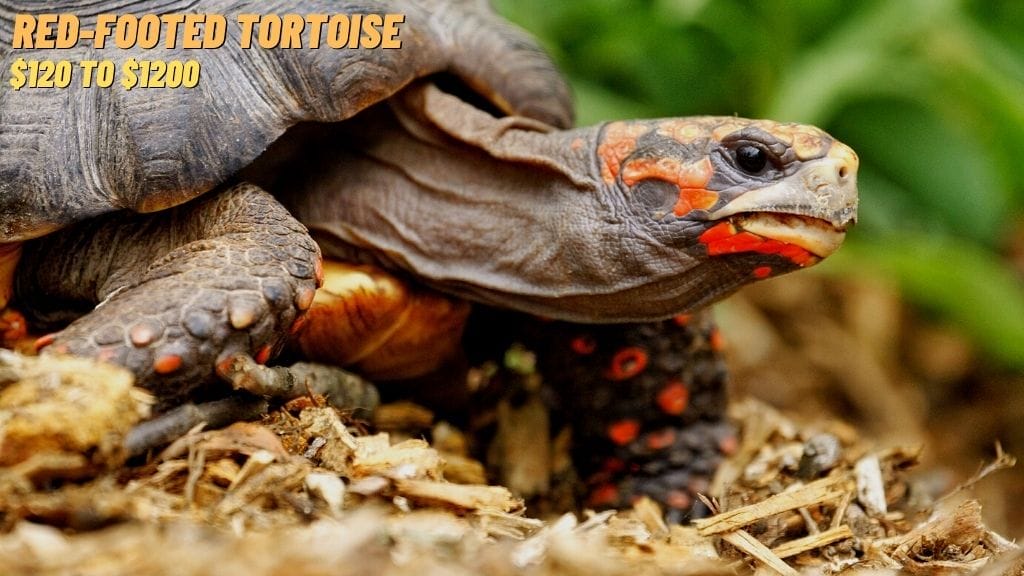
Soaking and Hydration
Red-Footed Tortoises may not swim, but they sure love a good soak! Soaking keeps them hydrated and helps prevent any digestive issues.
- How Often: Plan to soak your tortoise 1-2 times a week.
- How To Do It: Use a shallow tub with lukewarm water, no deeper than the tortoise’s chin.
- Duration: 15-20 minutes per soak.
Why This Matters
Your tortoise will absorb water through its skin, which is especially important in dry climates or if you have trouble maintaining the right humidity levels. I once skipped a soak, and my tortoise let me know by stomping around for hours!
Regular Health Checks
Think of this as a quick wellness check. You don’t need a vet degree, just a few minutes to ensure everything’s looking good.
- Shell: Look for smoothness and firmness. Red-Footeds are prone to shell issues if they don’t get enough calcium or UVB.
- Eyes: Eyes should be clear and bright. Cloudy or swollen eyes can mean health issues.
- Appetite and Behavior: Is your tortoise eating well? Moving around? Lethargy or lack of appetite can be signs they’re feeling off.
| Health Check Item | What to Look For | Potential Concerns |
|---|---|---|
| Shell | Smooth, firm | Pyramiding, soft spots |
| Eyes | Clear, bright | Swollen, cloudy |
| Nostrils | Clear, no discharge | Respiratory issues |
| Behavior | Active, curious | Lethargy, hiding |
Personal Experience
I make it a game to do a quick health check each time I change the food or water—my tortoise doesn’t even notice! It’s a quick, easy way to catch any problems early on.
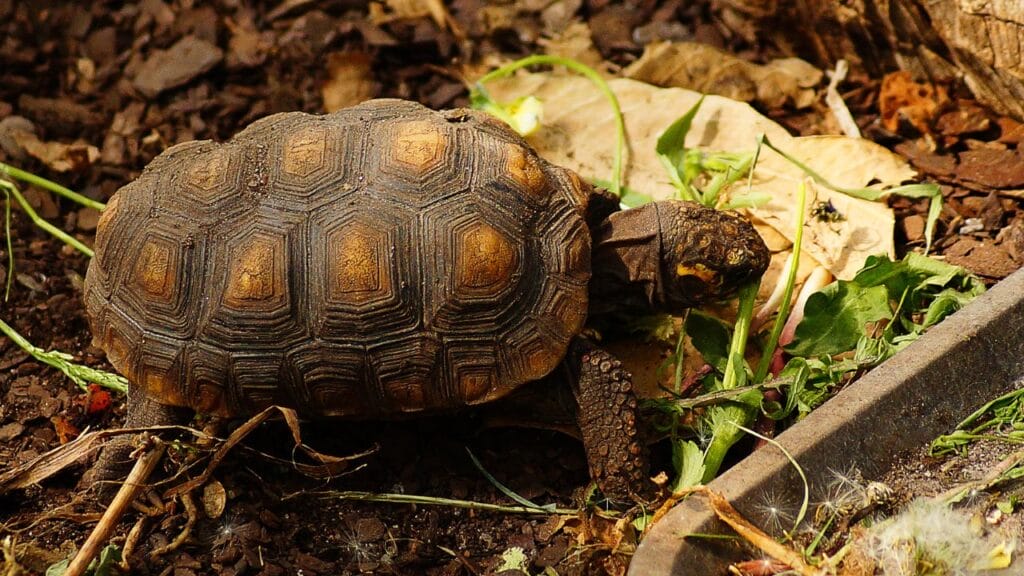
Perfect Wooden Tortoise House For Outdoor & Indoor!
This tortoise house isn’t cheap — but that’s because it’s not your average wooden box.
Built with durable wood, a waterproof liner, and smart design features like a sunbathing area and a hideout zone, the Aivituvin Large Wooden Habitat is made to last.
It’s perfect for tortoises or box turtles, indoors or out. And yep, it even has detachable legs.
If you’re serious about giving your tortoise a safe, comfy home without building one from scratch, this is the one.
👉 Grab the Aivituvin Tortoise House here — it’s currently $10 off.
Purchasing a Red-Footed Tortoise: Finding a Healthy Friend
Getting a Red-Footed Tortoise is exciting, but finding a healthy one is key. No one wants to bring home a tortoise only to face unexpected health issues.
Picking a reputable seller can make all the difference in starting off on the right foot—trust me, I learned this the hard way with my first pet tortoise!
Why Choose a Reputable Source?
- Health Matters: Tortoises from well-regarded breeders or sellers are typically screened for health issues.
- Less Stress: You’ll avoid surprises like parasites or respiratory infections, which can happen if you buy from a sketchy source.
- Expert Advice: Good sellers know these animals well. They’ll give you feeding tips, habitat setup help, and other pointers.
Recommended Source: xYZReptiles
I’ve found that xyzReptiles is a fantastic option if you’re looking for a healthy, vibrant tortoise. That’s why we have affiliated with them!
Here’s why they stand out:
| Benefits of xyzReptiles | Why It Matters |
|---|---|
| Health Guarantee | They offer a health guarantee, so you know you’re getting a strong, healthy tortoise. |
| Experienced Breeders | xyzReptiles has years of experience breeding Red-Footed Tortoises with care. |
| Educational Support | They provide feeding and care tips, which is perfect if you’re new to tortoises. |
| Responsive Customer Service | Have questions after you buy? They’re quick to help. |
What to Look for in a Healthy Tortoise
Even from a reputable source, it helps to know what to look for. Here are a few pointers:
- Clear Eyes: Eyes should be bright and clear, not cloudy or swollen.
- Smooth Shell: A smooth, even shell is a good sign of proper care and nutrition.
- Active Behavior: Healthy tortoises are alert and curious. They may even check you out before you buy!
Pro Tip: Ask Questions!
Don’t be shy about asking questions! A reputable seller like xyzReptiles will be happy to answer. Ask about:
- Diet and care recommendations
- The tortoise’s age and any history
- Tips for transitioning to their new home
Buying a Red-Footed Tortoise from a trusted source means you can focus on enjoying your new friend—rather than worrying about vet bills or mysteries.

About Author
Muntaseer Rahman started keeping pet turtles back in 2013. He also owns the largest Turtle & Tortoise Facebook community in Bangladesh. These days he is mostly active on Facebook.



